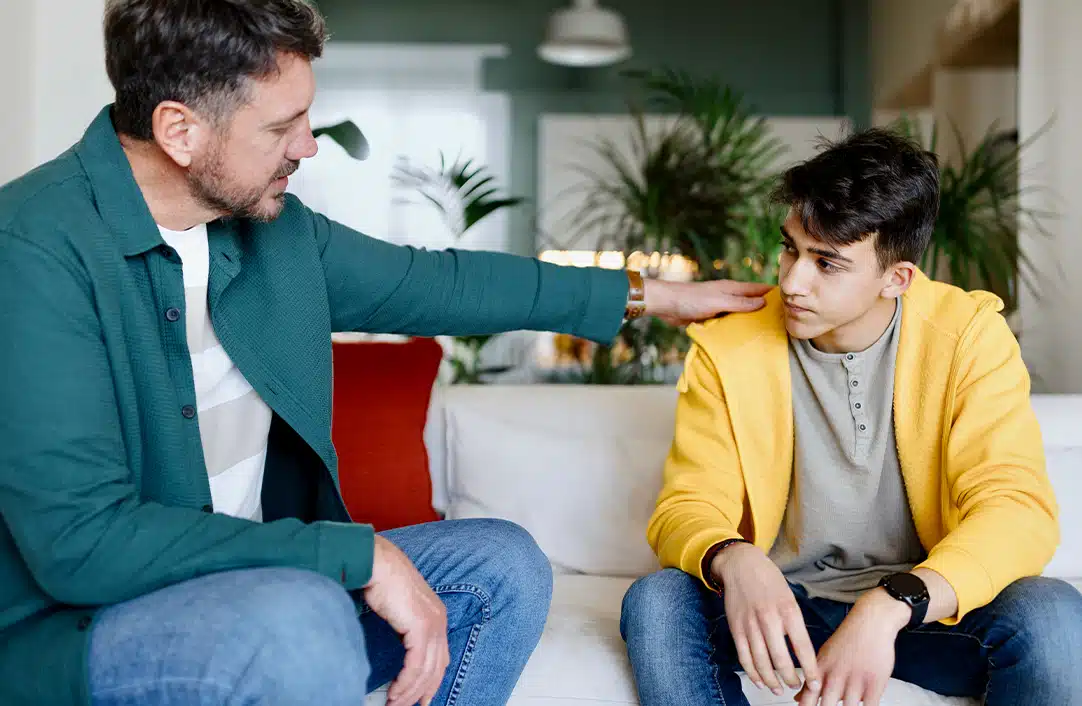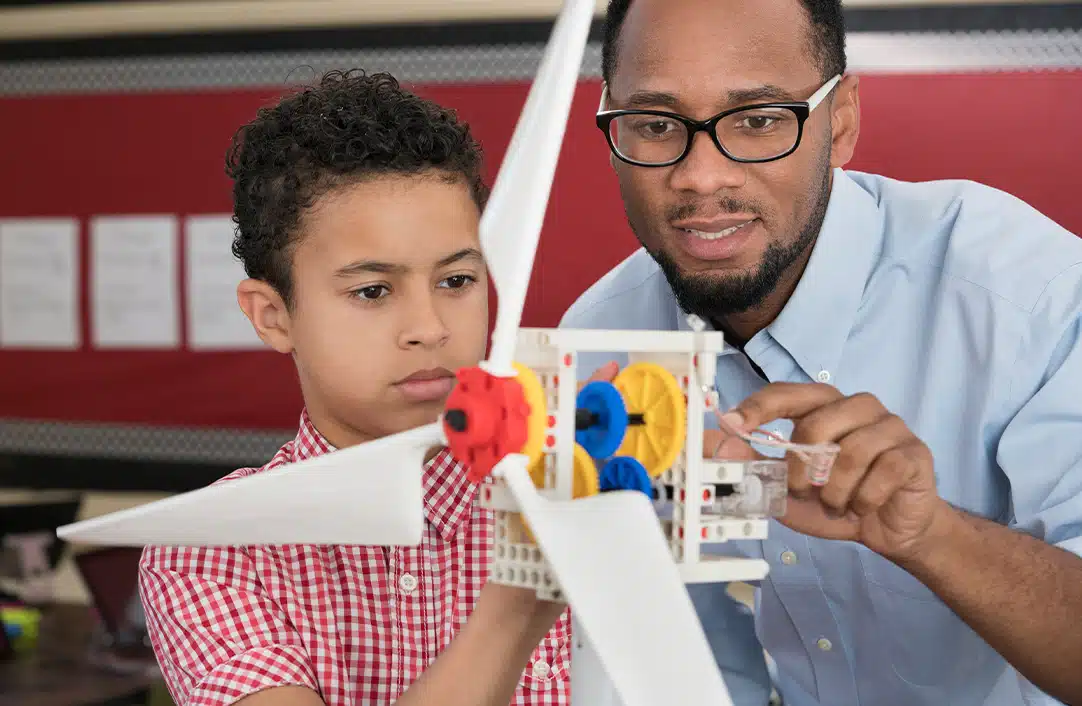While a parent may have the biggest influence on a child’s life when it comes to educating about healthy sexual development and reducing the risk of sexual abuse, many adults also play an impactful role—especially teachers. They have the potential to be an important safety net for kids who are at high risk for sexual abuse at home.
In the United States, each state has laws that require certain professionals (like teachers) to report suspicions of child abuse. Learn the laws in your state and see what your responsibility is, legally speaking. These, in addition to your school’s policies, will give you a good baseline on what to do when you have concerns that a child is being abused.
But what else can you do? Are their ways that you can recognize sexual abuse? Can you create a classroom environment that reduces the risk? How do you know what to say or when to say it in order to help a child? Below are seven ways that you can help reduce the risk of sexual abuse for your students:
01
KNOW THE FACTS
There are a lot of myths about child sexual abuse, so it’s important that you know the facts. The majority of children and teens are most likely to be sexually abused by someone they know and trust. Too often the abuse happens within their own family. This means that school may be one of the only safe places for them, whether you realize it or not. Sexual abuse affects kids of all races, religions, socioeconomic levels, and ages. If you don’t think it’s happening to children who attend your school, you’re wrong. It’s also important for you to know the signs, including looking for the possibility that a child is engaging in harmful sexual behavior and may be at risk for becoming a perpetrator of sexual abuse.
Simply arming yourself with accurate information can make a big difference in your classroom and school. When you encounter misinformation, you can step in and correct the inaccuracy. This will also help you reduce the stigma surrounding this topic and make it an appropriate topic to address with your colleagues.
02
LEARN ABOUT AGE-APPROPRIATE SEXUAL DEVELOPMENT
Depending on the age and maturity of a child, you can be sensitive to patterns of healthy sexual development and what’s typical for students within the age you teach. This may help you recognize sexual abuse, since exhibiting unhealthy or harmful sexual behaviors is a sign the child may have been sexually abused. You can also reduce the risk of a child acting on harmful sexual behaviors if you can recognize the signs. Keep in mind that not all children will develop at the same pace and things like maturity, mental or physical disabilities, and the environment where they’re being raised may impact their development as well.
When you are armed with the knowledge of what’s age-appropriate for your students, it will make it all the easier to spot when someone is not at the same level. This in and of itself is not a sign of sexual abuse, but when it’s combined with other factors it may lead you to ask questions, report, or advocate for a child who is in need of your help.
03
ENCOURAGE EMOTIONAL REGULATION
There are certain risk factors that raise the possibility of a child being sexually abused. Several of these factors may be combatted if a child learns emotional regulation. Emotional regulation is the ability to respond to the emotions felt in any given situation in a healthy and socially acceptable way. As adults we practice this skill often, but it’s something that children need to practice in order to develop. Responses such as tantrums, shouting, or meltdowns are signals that a child is having difficulty regulating their emotions. Depending on the age of your students you can implement policies in your class to help them have the time and space to work through overwhelming feelings.
Some ideas are giving them “alone time” to think about what they’re feeling and how they can deal with those emotions in an appropriate way for the classroom (make sure this doesn’t feel like a punishment or it could exacerbate the problem). You could utilize our Wheel of Emotions and help them identify their feelings so they can talk about them, or you can ask them to write down what they’re feeling as an essay or a story, depending on their age.
Giving kids a safe way to experience and resolve their emotional responses is not only an important life skill, but research has also shown that it will help prevent them from being sexually abused or sexually abusing someone else.
04
ENCOURAGE AND SUPPORT SCHOOL POLICIES
Most schools have policies in place for things like sexual harassment between students as well as policies dictating interactions between teachers and students. Encourage open discussion and understanding of these policies so that everyone (both students and staff) knows and understands both their rights and ways to respect the rights of others. If your school doesn’t have these types of policies in place, see what you can do about getting them implemented.
Many places require teachers to go through training or receive additional education about sexual abuse. These can often be emotionally overwhelming and leave you feeling hopeless about being able to ever make a difference. One way you can supplement this training with more hopeful and actionable information is by utilizing our classes designed for community members.
05
ENCOURAGE PARENTS TO EDUCATE THEIR CHILDREN
Whether or not your school has a comprehensive sexual education program, at Saprea we believe that parents are the most important source of information for their children. Many parents may not be discussing healthy sexual development with their children simply because they don’t realize what an impact it can have. You can encourage them to have little talks about sexual development with their kids.
Letting them know the importance of teaching their child assertive communication could be a good place to start. Or the importance of modeling healthy relationships. You could even start with talking to them about raising their child’s self-esteem. Whenever possible, encourage them to talk to their children openly and honestly about healthy sexual development, which may make all the difference in reducing the risk that the child will be sexually abused or will sexually abuse others.
06
TRUST YOUR INTUITION AND REPORT PROBLEMS
Like the adage you hear when you’re waiting for a flight in the airport, “If you see something, say something.” If you see a coworker or student exhibiting behaviors that cause you to worry, speak up about it. This may be letting a fellow teacher know that their relationship with a student seems to be veering into dangerous territory or pulling a student aside to ask them if everything is okay. Your school may have policies in place of who you should report to and how; make sure you know what the protocol is when you see something.
If you know that sexual abuse is occurring, don’t hesitate to report it. There are many survivors of child sexual abuse who have a teacher to thank for stopping the abuse they were experiencing. If your intuition tells you that something is “off” with a situation or someone, the chances are it is and you should investigate further.
07
BE A TRUSTED ADULT
There may be kids in your classroom who don’t feel safe at home. No matter what their family looks like, no matter how much (or how little) money their parents make or how nice their neighborhood is, a child may be experiencing sexual abuse. You can create an atmosphere of safety in your classroom and be someone they trust. Let them know that if there are problems in their lives, they can talk to you about them. Stress to them that secrets won’t keep them safe.
Whether a student is being sexually abused or not, having an adult they feel safe with is important. Allowing them a space where they can be themselves and where they are encouraged to work through their emotions in a healthy way can make all the difference in their lives.
Together We're Better
Recent blogs

Common Symptoms Experienced by Adult Survivors of Child Sexual Abuse

Statute of Limitations on Sexual Abuse

